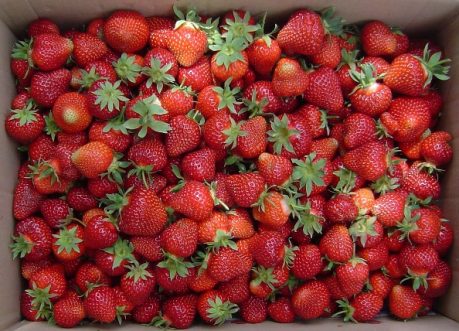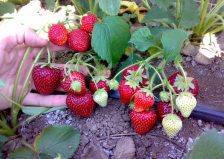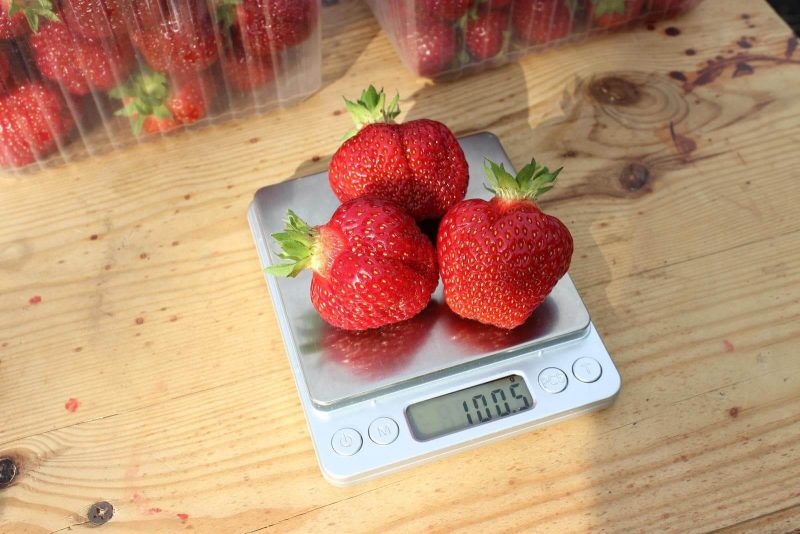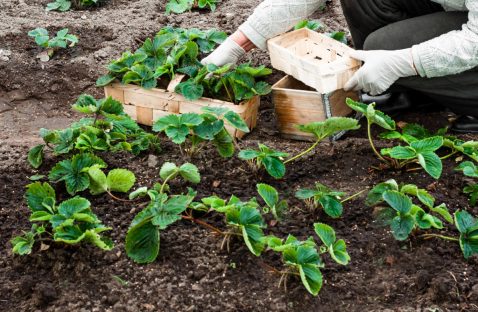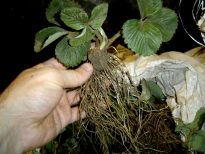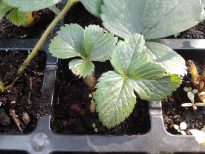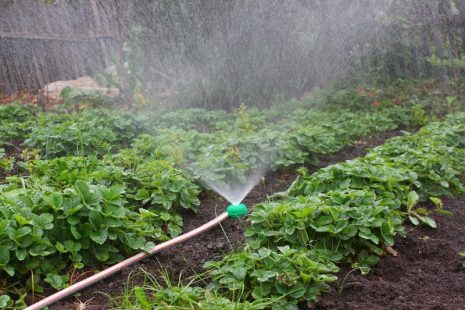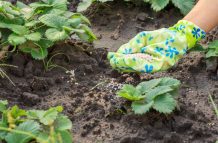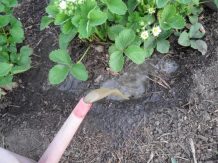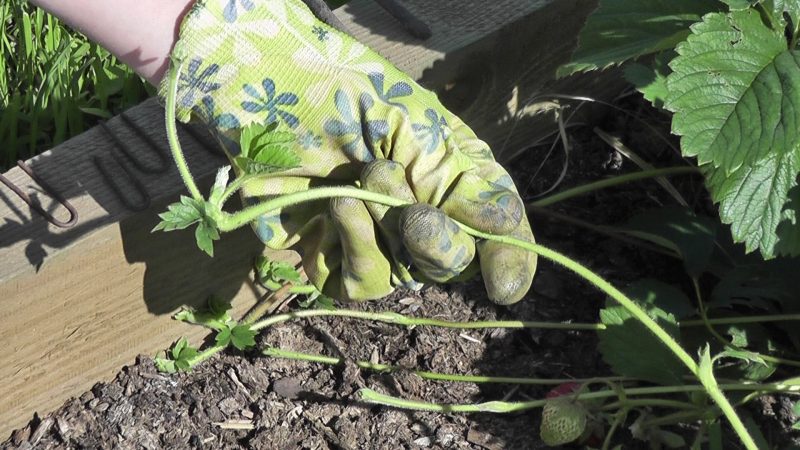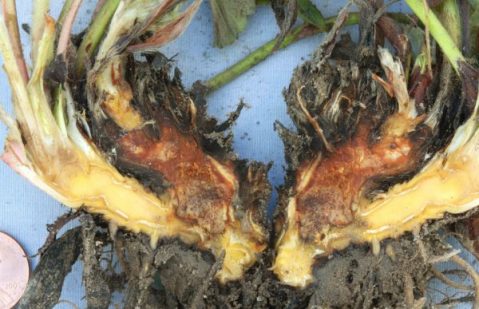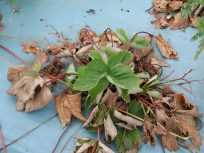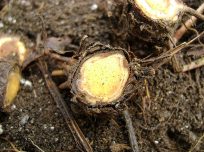Strawberries are good not only fresh. A jar of fragrant strawberry jam or jam will be completely out of place on a tea table in autumn weather or on a cold winter day. Therefore, if the gardener is looking for a variety for further processing, then the strawberry Honey will be an excellent choice.
Material Content:
Characteristics and description of strawberries Honey
The Honey variety is the fruit of the efforts of American breeders who, as a result of crossing the famous Holiday and Vibrant strawberries, got a completely new shape back in 1979. However, in Russia this variety began to be cultivated only in 2013 after the completion of varietal tests, which lasted about 20 years.
The mid-early strawberry “Honei”, also known as “Honeoye”, forms lush bushes consisting of powerful, slightly leafy shoots covered with slightly wrinkled leaf plates. In place of the flowers that are celebrated in late spring - early summer, shiny bright red conical-shaped berries without aroma are poured. Mustache is quite short. The underground part is represented by a strong, viable root system.
Fruiting occurs in the second half of June, when fruits with a high content of ascorbic acid can be harvested. The average weight of the berry varies depending on the stage of fruiting: the first fruits can weigh up to 25 g, with mass ripening - 16-18 g. The average yield from 1 m2 is about 1 kg.
On a note! It will be important for those who take into account whether strawberries are remodeling or not, it will be important to know that, despite the certain merits of the variety, it bears fruit only once per season.
Advantages and disadvantages of the variety
The Honei strawberry variety, like the others, has both pros and cons.
Among the advantages stand out:
- stable fruiting with good yield indicators;
- frost and drought resistance;
- tolerance to a number of fungal diseases and pests;
- quick recovery after mechanical damage;
- good transport tolerance.
Disadvantages are also available:
- susceptibility to verticillial wilting;
- exactingness to watering system;
- low rate of sweetness (in cool weather, the taste of the fruit may acquire even a slight bitterness).
The need for the cultivation of the variety was caused by a shortage of strawberries suitable for industrial processing, which explains the low sugar content in berries.
Landing rules and care features
Successful cultivation of strawberries, which will result in a large crop of quality berries, provides for the implementation of the agrotechnical regulations for cultivating the variety.
Landing work
For strawberries of short daylight, it is necessary to choose a sunny area with fertile soil, on which the culture can realize its full potential. Planting is carried out according to the scheme 30x50 cm, where 30 cm is the distance between the bushes, and 50 cm is the distance between the beds. The root neck of the seedlings should not be buried in the ground, which can lead to decay of the plant. After planting, plantings must be watered so that no air layers remain around the roots.
On a note! The optimal planting time is spring, when the threat of return frosts passes.
Care Activities
To obtain the maximum possible yield should systematically care for the plantings.
- Watering - since the variety does not like waterlogging, but nevertheless needs constantly moist soil, it is recommended to organize strawberry drip irrigation.
- Weeding and cultivation - weeds should not be allowed to develop: they should be removed at the first detection. Also, for the season it is necessary to carry out at least four cultivations.
- Feeding - “Honey” needs additional nutrition, which is produced in early spring by nitrogen, during budding, flowering and fruiting - by phosphorus, and with the advent of autumn, potassium sulfate is added to phosphate fertilizers.
- Shelter - a frost-resistant variety will have enough coverage with fallen garden leaves. If the climate in the cultivation regions is too harsh, then you can use a special covering material or fir spruce branches.
Strawberry Honey, bred for industrial cultivation, is rather unpretentious in care and requires only standard procedures.
Read also:gray fescue
Strawberry propagation
Varietal strawberry "Honeoye" propagated with the help of mustache. This vegetative method is used in early summer, when:
- The most powerful bush is selected, on which 3-4 most developed mustaches with rosettes are left.
- All other than selected ones are deleted.
Furrows are prepared nearby, into which the mustache is pinned. - The shoots are buried in, and separated only after rooting, which will be evidenced by newly formed leaves.
Do not forget that it is first necessary to remove all the peduncles from the planned bush so that the plant does not waste energy on the formation and filling of the fruits.
Diseases and Pests
According to the description of the variety, Honey strawberry has excellent immunity and is not prone to damage by many harmful organisms. However, this culture still has a weakness: it is not tolerant to a fungus from the genus Verticillus, which provokes the development of verticillus wilt. At the first signs of this disease, expressed in the drying of the lower leaf plates, a fungicide treatment of the plantings is carried out. However, due to the toxicity period of the pesticide, it should be remembered that chemical treatment should not be carried out after the end of flowering so that there is no pesticidal residue in the harvested crop.
Strawberry Honey will be a great addition to the beds with sweet, fragrant varieties planted for fresh consumption.Harvest from the first gardener can without hesitation send for processing, preparing wonderful sweet treats for the winter. With overly abundant fruiting, due to the high commercial qualities of the variety, “Honey” can always be realized.



